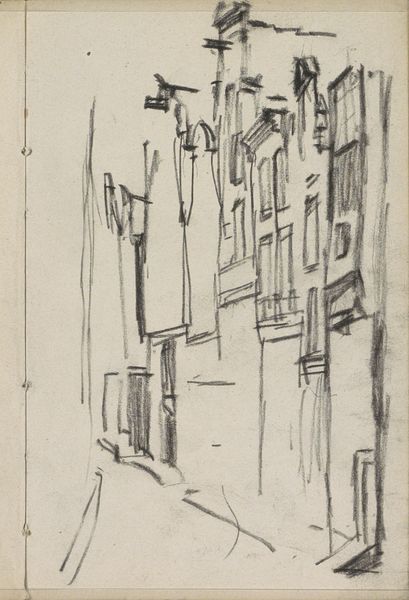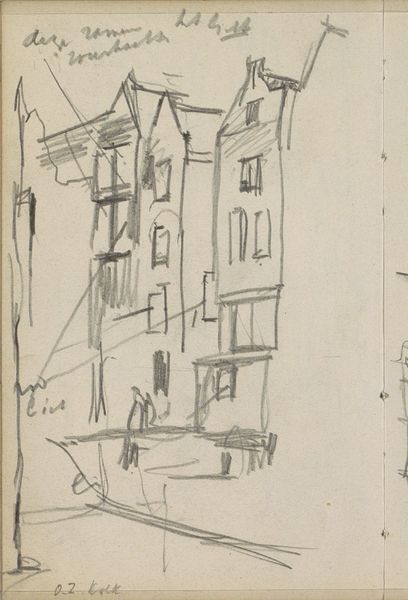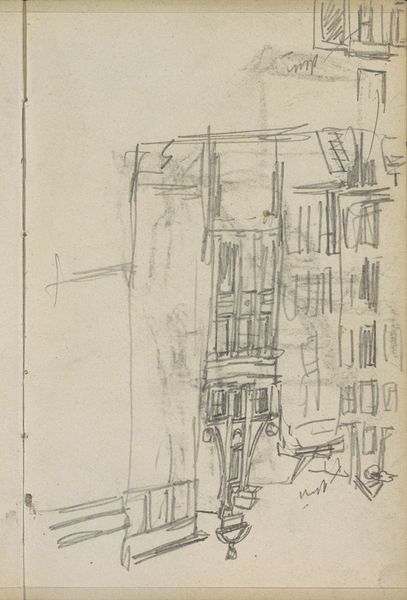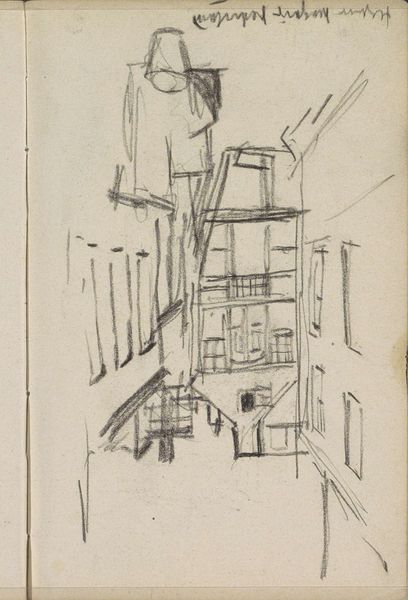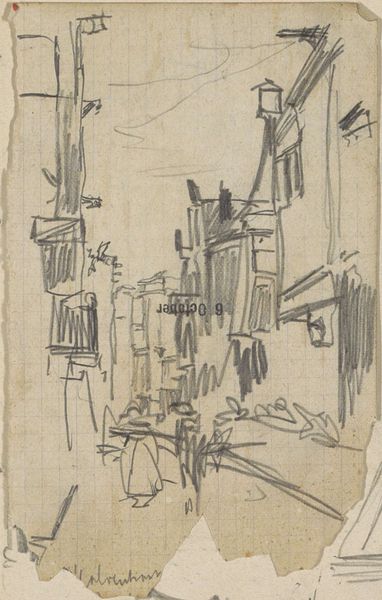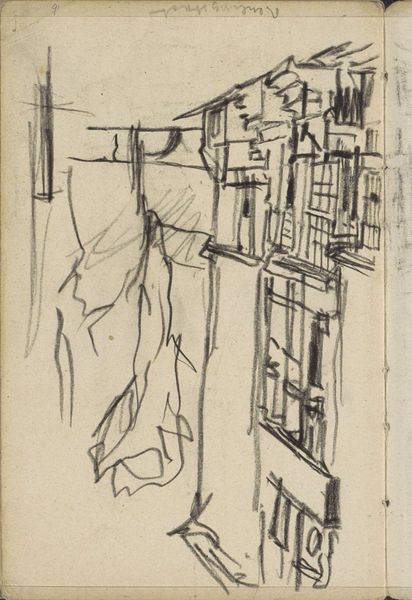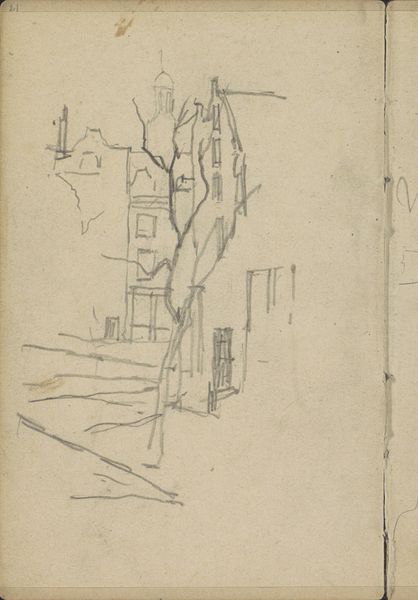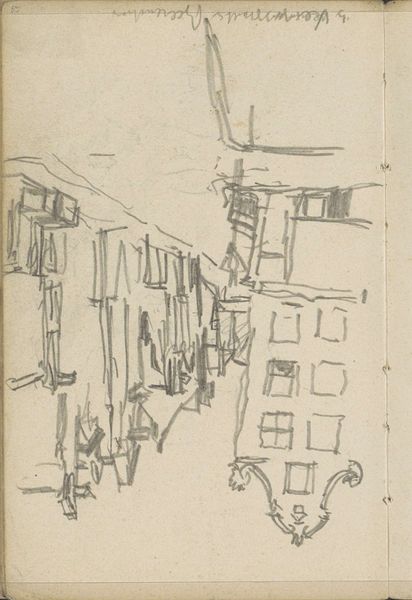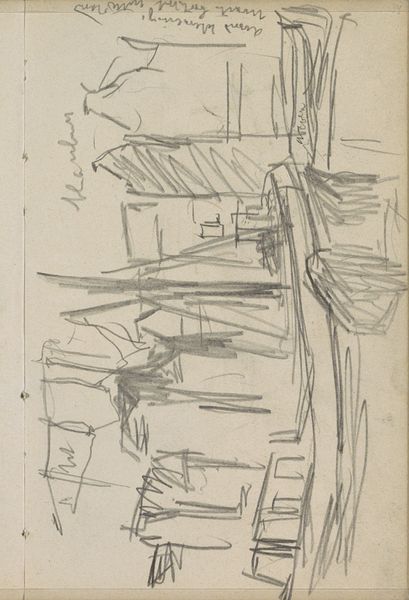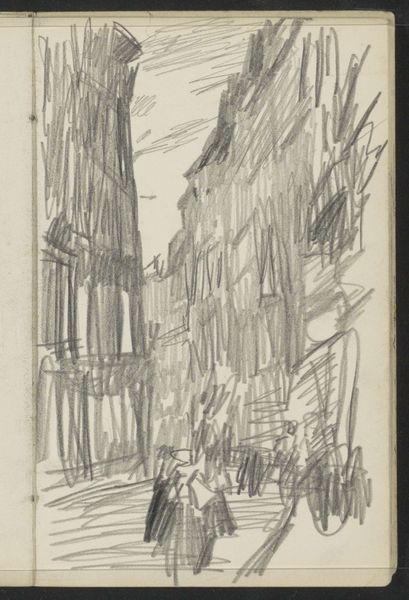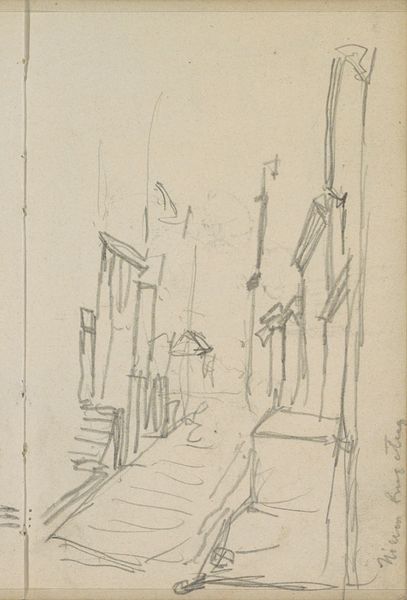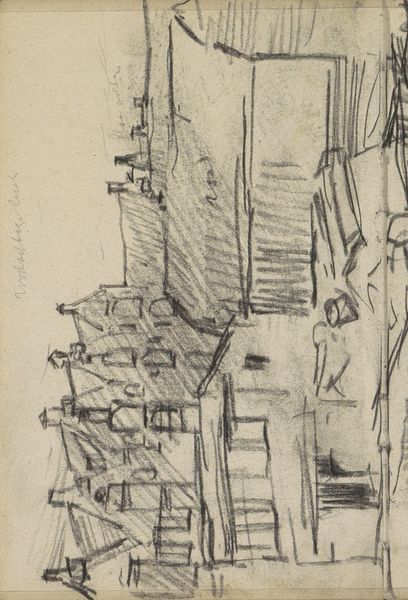
Copyright: Rijks Museum: Open Domain
Curator: So, here we have George Hendrik Breitner’s "View of the Rozenboomsteeg in Amsterdam," a graphite drawing from around 1902, housed right here at the Rijksmuseum. What’s your immediate sense of this one? Editor: Immediately, I feel the pace, almost hurried. The quick, gestural lines—they really capture a sense of urban life in motion, but with a starkness, a bareness to it, no frills. Curator: Yes! That directness is so Breitner. He wasn't interested in idealizing Amsterdam. There is a sense that the fleeting nature of urban life and the rawness of the streets captured by that monochrome palette, is far more important. No colour is needed. He found beauty in reality, however messy or incomplete. Editor: And it raises questions about whose reality? Who gets represented in these urban scenes? The angle feels almost intrusive, capturing a slice of life without permission, subtly framing that moment of everyday urban life with those shadows cast within the buildings and road. Curator: Absolutely. You feel like you are eavesdropping, right? Breitner, though part of the Impressionist movement, always had this grounding element in his work. You might describe his works almost journalistic. His subjects were often working-class people, the kind you wouldn't often see in mainstream art. These sketches he's doing have been the perfect tool to achieve such spontaneity! Editor: The use of graphite—it really emphasizes the grit of the city, doesn't it? I am interested, how do we interpret "View of the Rozenboomsteeg in Amsterdam" from a social standpoint? Curator: Good question. Think of Amsterdam at the turn of the century. Major urban growth is going on! So Breitner, with his lens trained on the everyday, gives us glimpses into lives often ignored: tradesmen, workers on the move. Those ordinary characters of daily existence. Editor: I'm struck by the apparent lack of activity. Is this meant to hint at an emptiness, an abandonment in the shadows of this place? What is absent in that portrayal, as a silent witness. The composition leads our gaze down the lane and there are one or two figures in the background but where is everyone? This is very telling about who he depicts in comparison to who is not to be depicted. Curator: It's funny, you see emptiness and I see suggestion. I think his choice to show you 'a fragment' gives the space its poignancy and character; his eye simply edits out anything it is not interested in and what you get is 'this specific space' for Breitner alone. Editor: It really underscores the artist's viewpoint, right? The sketch is of great political importance in how it can depict and, simultaneously, obscure subjects that create debate on visibility within his work. Thanks to him and art history, his voice carries this message far beyond its initial intention. Curator: And the freedom to capture those intimate moments are all thanks to Breitner. The fact we get such a glimpse feels rather beautiful and it makes me admire what he sets out to accomplish.
Comments
No comments
Be the first to comment and join the conversation on the ultimate creative platform.
